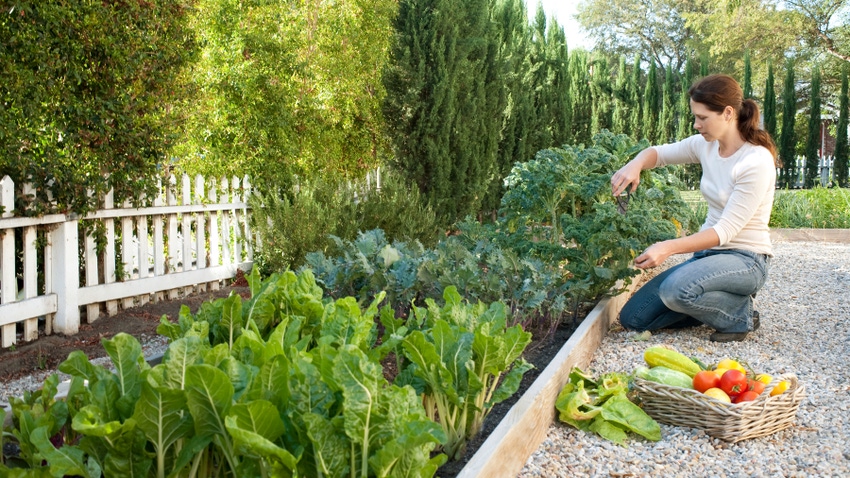March 3, 2023

by Sarah Browning
How can I convert my garden to no-till? I often hear from vegetable or flower gardeners who are unhappy with their soil quality.
They routinely incorporate organic matter in the soil each fall but are still disappointed with their heavy soil. Why aren’t they developing beautiful, crumbly, dark-brown soil that’s easy to plant and great for vegetable root crops?
Routinely tilling your garden soil each fall and spring could be the culprit.
Microbes, humus and soil aggregation
Soil is a combination of nonliving materials — sand, silt and clay particles — along with organic matter and living organisms. The largest living soil organisms include earthworms, insects and nematodes; the smallest are bacteria and fungi. But there are many, many soil organisms in between.
Organic matter comes from the decomposing remains of plant and animal life and is a food source for these soil organisms, releasing nutrients as it breaks down into humus. The amount of organic matter in soil is affected by a variety of factors, including the kinds of crops grown, whether plant residue is removed or incorporated into the soil, the frequency of tillage, and the wetness or drainage of the soil.
Humus is decomposed organic matter that has reached a stable stage and will not decompose any further without a change in temperature, pressure or heat. It’s very important to healthy soil because it increases populations of soil organisms by improving water-holding capacity and water percolation and reduces soil erosion and nutrient leaching.
Through their normal life processes, soil organisms create substances that act as glue, binding together particles of organic matter, humus, silt, clay and sand, creating soil aggregates. The development of good soil aggregate structure improves soil texture, gradually helping gardeners develop the loose, easy-to-work soil they desire.
Benefits of no-till
Tilling physically destroys or breaks down soil aggregates — those tiny clumps of silt, clay, sand and humus. These tiny clumps are important because they create large and small pore spaces in the soil, which are used as pathways for water, oxygen and plant roots to penetrate the soil.
Reducing or eliminating tilling in your garden provides the following benefits:
slower decomposition of organic matter, resulting in increased organic matter levels
increased soil organism populations and activity
retention of current soil aggregates and increased formation of new soil aggregates
improved water percolation into soil and water drainage
improved soil aeration
improved crop root development
increased resistance to wind and water soil erosion
Converting to no-till
It’s easiest to start in the fall or winter. Collect all the available organic matter you can find, such as tree leaves, pine needles, sawdust, wood chips, bark, corncobs, cornstalks, grass clippings or straw. Manure can also be used. Just make sure to use only composted manure in vegetable gardens, unless the manure is applied:
no less than 120 days before harvest on those vegetables where the edible portion of the crop is in direct contact with the soil
90 days before harvest if the edible portion of the crop is not in direct contact with the soil
Note that aged, stacked manure is never considered "composted," no matter how long it has been stacked.
Using your organic materials, create a mulch layer 8- to 10-inches deep over the soil.
Design your garden with planting beds narrow enough to plant, weed and harvest without walking in them, which would increase soil compaction. Four-foot-wide planting beds work well. Walking paths can be mulched or planted with grass or another ground cover.
Guess what? You’re done! The organic matter will begin to break down and become incorporated in the soil by earthworms and other soil organisms. Over time, your soil organic matter levels will increase, along with increasing numbers of soil microbes and improved soil aggregation imparting all the benefits discussed above.
Whenever you plant, simply push aside the mulch layer where you want to place your seeds or transplants. Use a hoe to create a planting furrow or hand-dig holes for individual transplants. Once the plants are up and growing, pull the mulch back in place or reapply fresh mulch around the base of the plants. This will prevent rain splash of soil and plant pathogens onto the lower leaves (which is the most common method of disease introduction) and conserve soil moisture.
At the end of the growing season, incorporate the dead vegetation into the mulch layer. Or, if you prefer, compost it first then spread the compost over your garden. Replenish the mulch layer over planting beds in fall and winter as needed to maintain an 8- to 10-inch layer.
Master over weeds
One final benefit of no-till gardening: reducing weed problems. Tilling brings fresh weed seed to the soil surface each year, so combining good weed management with no-till practices will eventually reduce the amount of weed seed in the upper few inches of soil.
Plus, the thick mulch layers used to create your beds reduces light penetration into the soil surface and further reduces weed seed germination.
Browning is a Nebraska Extension educator based in Lancaster County.
You May Also Like




